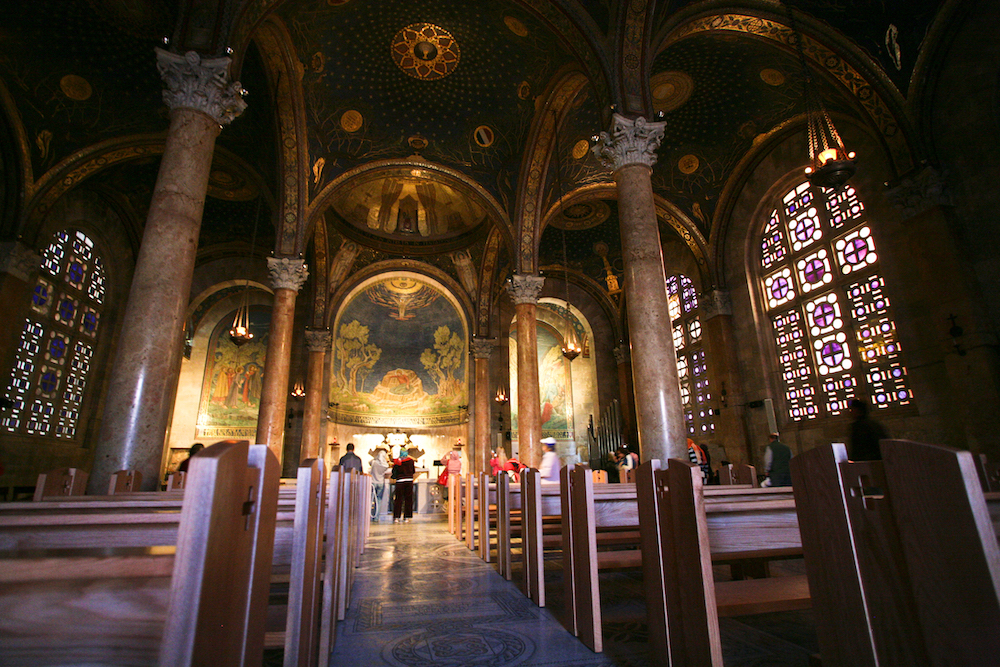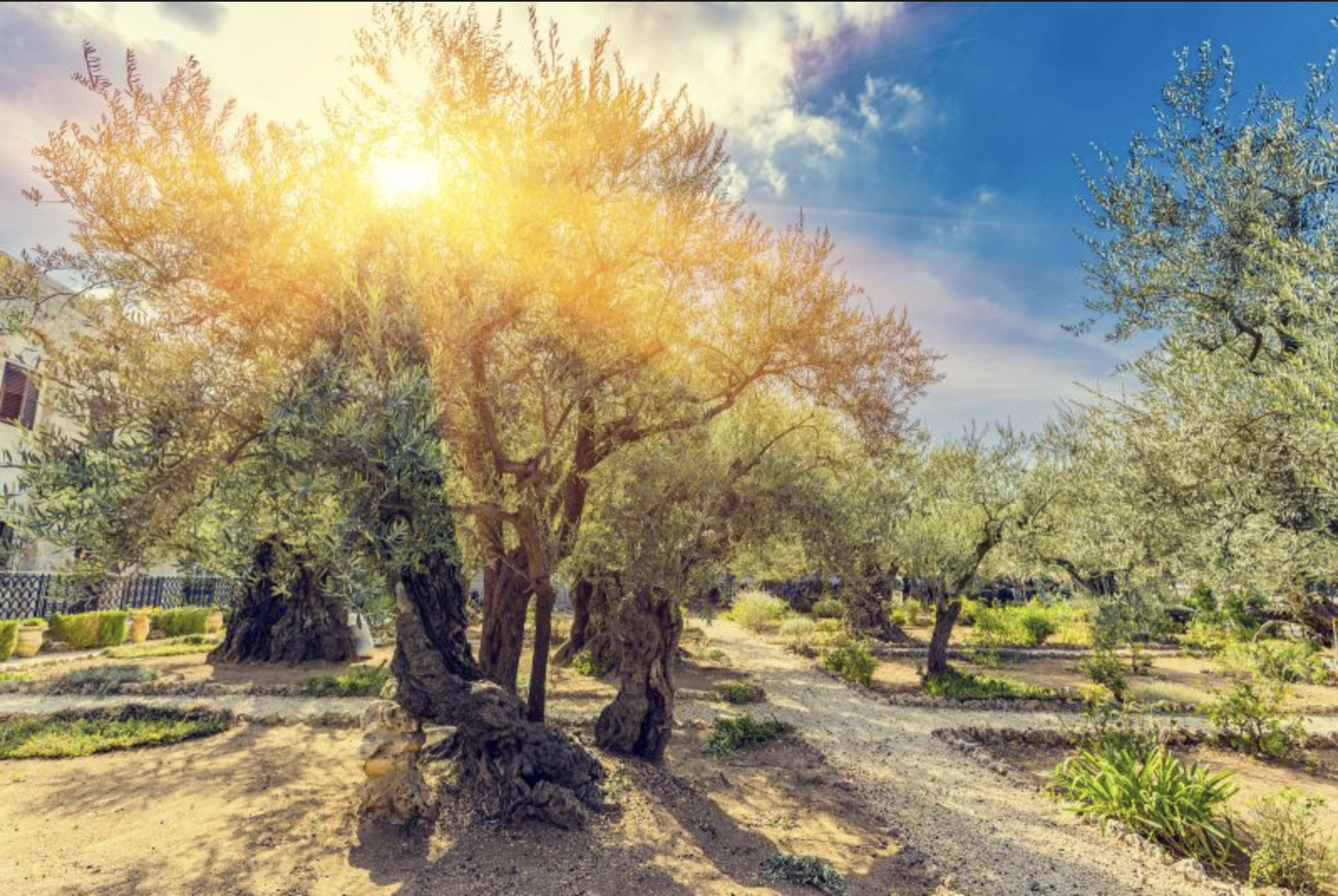As written in the New Testament, Gethsemane is the name of the garden where Jesus prayed before His betrayal and arrest (Mark 14:32-50).
“Then Jesus came with them to a place called Gethsemane, and said to His disciples, “Sit here while I go over there and pray.” And He took with Him Peter and the two sons of Zebedee, and began to be grieved and distressed.” (Matthew 37-26:36)
The Mount of Olives, located to the east of Jerusalem, separates the Holy City from the Judean Desert which from there, begins its descent to the Dead Sea. The Kidron Valley, which surrounds Jerusalem to the east, separates the Mount of Olives from the city and from the nearby Mount Zion, located to the south, from where Jesus set off on foot after the Last Supper, crossing the Valley to reach Gethsemane. The garden is located at the entrance of the property of the sanctuary of Gethsemane, occupying an area of approximately 13,000 square feet and protected by a fence that allows holy land visitors to walk around the ancient olive trees.

The Basilica of the Agony, located adjacent to the Garden of Gethsemane (via WikiMedia Commons)
Adjacent to the garden is the Basilica of the Agony. Also known as the Church of all Nations, the basilica is a Roman Catholic Church that enshrines a section of the bedrock where is believed Jesus prayed before his arrest. The Basilica of Agony which stands today was constructed from 1919-24 with support from 12 different nations, thus garnering the name “the Church of All Nations.” The church has a rich history, being built on the foundation of two ancient churches, including a 4th-century Byzantine basilica which was destroyed by an earthquake in 746, and atop a 12th-century chapel built by the Crusaders, and later abandoned in 1345.
Jesus’ prayer in the garden of Gethsemane is commemorated yearly on Holy Thursday, after the Last Supper. The word Gethsemane translates to “oil press” referring to olive oil due to the many olive trees in the area. Today Holy Land tour visitors are amazed to see olive trees dating back to the time Jesus’ walked in the Land of the Bible.
Originally posted at Israel Tourism Consultants.


